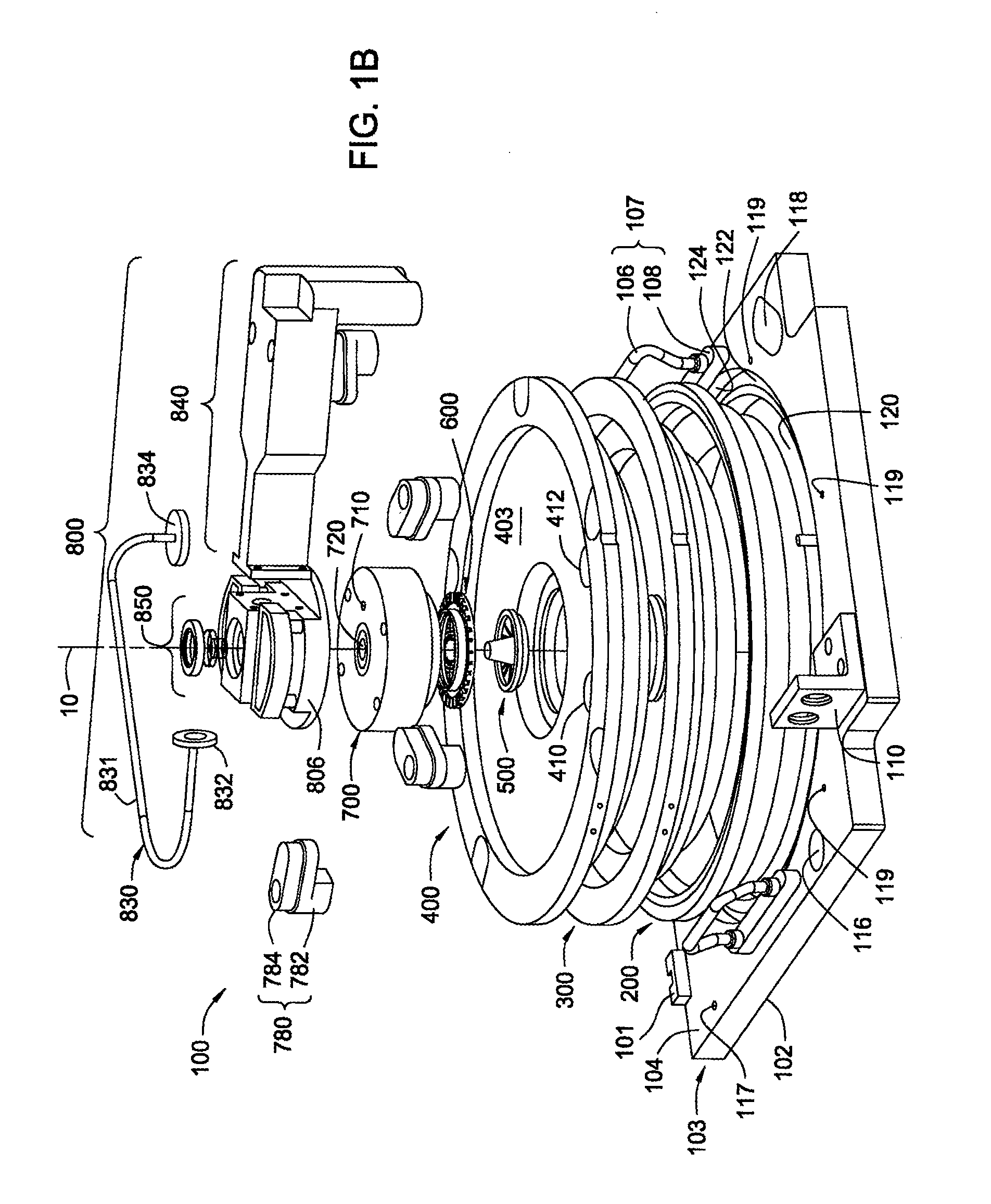Apparatus and process for plasma-enhanced atomic layer deposition
a technology of atomic layer deposition and apparatus, which is applied in the direction of chemical vapor deposition coating, solid-state devices, coatings, etc., can solve the problems of many limitations of pe-ald processes, slow process deposition rate, and inability to meet the requirements of production
- Summary
- Abstract
- Description
- Claims
- Application Information
AI Technical Summary
Benefits of technology
Problems solved by technology
Method used
Image
Examples
experiment 1
Ru with Constant Flow of NH3 and Intermediate Plasma
[0178] The ruthenium precursor used during this experiment was bis(2,4-dimethylpentadienyl)ruthenium ((DMPD)2Ru). During the experiment, the pressure within the process chamber was maintained at about 2 Torr and the substrate was heated to about 300° C. An ALD cycle included the following steps. A ruthenium precursor gas was formed by passing a nitrogen carrier gas with a flow rate of about 500 sccm through an ampoule of (DMPD)2Ru heated at a temperature of about 80° C. The substrate was exposed to the ruthenium precursor gas with a flow rate of about 500 sccm and ammonia gas with a flow rate of about 1,500 sccm for about 3 seconds. The flow of the ruthenium precursor gas was stopped while the flow of the ammonia gas was maintained during a purge step. The purge step was conducted for about 2 seconds. Subsequently, a plasma was ignited to form an ammonia plasma from the ammonia gas while maintaining the flow rate. The RF generator,...
experiment 2
Ru with Constant Flow of NH3 and Intermediate Plasma
[0179] The ruthenium precursor used during this experiment was methylcyclopentadienyl ethylcyclopentadienyl ruthenium ((MeCp)(EtCp)Ru). During the experiment, the pressure within the process chamber was maintained at about 2 Torr and the substrate was heated to about 300° C. An ALD cycle included the following steps. A ruthenium precursor gas was formed by passing a nitrogen carrier gas with a flow rate of about 500 sccm through an ampoule of (MeCp)(EtCp)Ru heated at a temperature of about 80° C. The substrate was exposed to the ruthenium precursor gas with a flow rate of about 500 sccm and ammonia gas with a flow rate of about 1,500 sccm for about 3 seconds. The flow of the ruthenium precursor gas was stopped while the flow of the ammonia gas was maintained during a purge step. The purge step was conducted for about 2 seconds. Subsequently, a plasma was ignited to form an ammonia plasma from the ammonia gas while maintaining the f...
experiment 3
with Constant Flow of NH3 and Intermediate Plasma
[0180] The ruthenium precursor used during this experiment was methylcyclopentadienyl pyrrolyl ruthenium ((MeCp)(Py)Ru). During the experiment, the pressure within the process chamber was maintained at about 2 Torr and the substrate was heated to about 300° C. An ALD cycle included the following steps. A ruthenium precursor gas was formed by passing a nitrogen carrier gas with a flow rate of about 500 sccm through an ampoule of (MeCp)(Py)Ru heated at a temperature of about 80° C. The substrate was exposed to the ruthenium precursor gas with a flow rate of about 500 sccm and ammonia gas with a flow rate of about 1,500 sccm for about 3 seconds. The flow of the ruthenium precursor gas was stopped while the flow of the ammonia gas was maintained during a purge step. The purge step was conducted for about 2 seconds. Subsequently, a plasma was ignited to form an ammonia plasma from the ammonia gas while maintaining the flow rate. The RF gen...
PUM
| Property | Measurement | Unit |
|---|---|---|
| sizes | aaaaa | aaaaa |
| aspect ratios | aaaaa | aaaaa |
| diameter | aaaaa | aaaaa |
Abstract
Description
Claims
Application Information
 Login to View More
Login to View More - R&D
- Intellectual Property
- Life Sciences
- Materials
- Tech Scout
- Unparalleled Data Quality
- Higher Quality Content
- 60% Fewer Hallucinations
Browse by: Latest US Patents, China's latest patents, Technical Efficacy Thesaurus, Application Domain, Technology Topic, Popular Technical Reports.
© 2025 PatSnap. All rights reserved.Legal|Privacy policy|Modern Slavery Act Transparency Statement|Sitemap|About US| Contact US: help@patsnap.com



